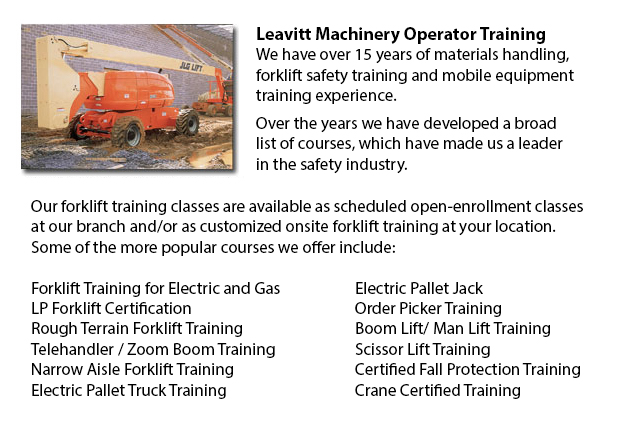
St Catharines Boom Lift Safey Training - Boom lifts fall under the kind of aerial lifting device or elevated work platform. Most normally used in construction, industry, and warehousing; the boom lift is really versatile that it can be used in almost any setting.
The elevated work platform is used to enable access to heights which were otherwise inaccessible utilizing other means. There are risks inherent when making use of a boom lift device. Workers who operate them should be trained in the proper operating methods. Preventing accidents is paramount.
The safety aspects that are included in boom lift operation are included in our Boom Lift Training Programs. The course is best for those who operate self-propelled boom supported elevated work platforms and self-propelled elevated work platforms. Upon successfully finishing the course, participants will be issued a certificate by someone authorized to verify the completion of a hands-on assessment.
So as to help train operators in the safe use of elevated work platforms, industry agencies, federal and local regulators, and lift manufacturers all play a part in providing the necessary information and establishing standards. The most essential ways to avoid accidents related to the utilization of elevated work platforms are the following: putting on safety gear, conducting site assessment and checking machinery.
Important safety considerations when operating Boom lifts:
Operators should observe the minimum safe approach distance (or also called MSAD) from power lines. Voltage could arc across the air to find an easy path to ground.
In order to maintain stability when the platform nears the ground, a telescopic boom needs to be retracted prior to lowering a work platform.
Individuals working from the platform of a Boom lift must tie off to be able to ensure their safety. Safety harness and lanyard combinations should not be attached to any anchorage other than that provided by the manufacturer, never to other poles or wires. Tying off may or may not be necessary in scissor lifts, depending on particular job risks, local regulations, or employer guidelines.
Avoid working on a slope which exceeds the maximum slope rating as specified by the manufacturer. If the slop exceeds requirements, then the machine must be winched or transported over the slope. A grade could be measured without problems by laying a straight board or edge of at least 3 feet on the slope. Afterward a carpenter's level could be laid on the straight edge and the end raised until it is level. The percent slope is obtained by measuring the distance to the ground (likewise referred to as the rise) and then dividing the rise by the length of the straight edge. Then multiply by 100.
-
St Catharines Heavy Equipment Training Schools
St Catharines Heavy Equipment Training Schools - When selecting an operator training course, there are a lot of heavy equipment training schools to choose from. To be able to ascertain the qualifications you will attain, it is very important to explo... More -
St Catharines Heavy Equipment Operator Training
St Catharines Heavy Equipment Operator Training - Heavy equipment operator training facilities that offer quality standards within the business, offering field performance work and additional machine training are really sought after training features... More -
St Catharines Forklift Training Programs
St Catharines Forklift Training Programs - Are you looking for work as a driver of a forklift? Our regulatory-compliant mobile equipment operator training offers instruction in kinds of forklifts, pre-shift check, fuel kinds and handling of fuels, an... More -
St Catharines Heavy Equipment License
St Catharines Heavy Equipment License - A heavy equipment license can be obtained by taking a certification and preparation course at a private training school or a vocational school. This license would qualify you to operate various types of heavy e... More -
St Catharines Overhead Crane Safety Training
St Catharines Overhead Crane Safety Training - Overhead crane safety training equips operators with skills and knowledge regarding crane safety precautions, accident avoidance, materials handling, and equipment and stock protection. Trainees will lea... More -
St Catharines Scissor Lift Training
St Catharines Scissor Lift Training - Scissor lifts should be operated proficiently to be able to protect the safety of the equipment and the wellbeing of others within the workplace. Operators who are skilled are trained to drive the specific type o... More -
St Catharines Telescopic Training
St Catharines Telescopic Training - Telescopic Handlers are a kind of forklift, normally known as telehandlers. This machine has been increasing in popularity due to its greater lift heights and its versatility. It is often preferred over the convent... More -
St Catharines Boom Lift Certification
St Catharines Boom Lift Certification - Utilizing elevated work platforms allow for maintenance operations and work to be carried out at elevated work heights which were otherwise unreachable. Boom Lift Certification Training educates workers about t... More

Forklift Certification St Catharines
TOLL FREE: 1-888-254-6157
St Catharines, Ontario
forkliftcertificationstcatharines.com/
Email Us
About Us


